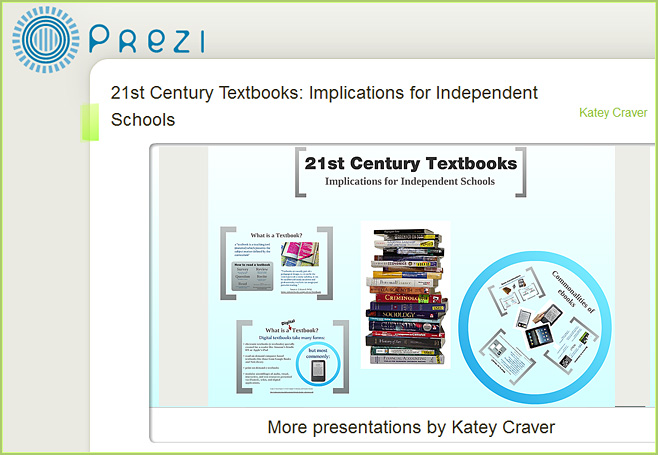New Sony TV Ad: Television Redefined, Internet TV, 4/15/11 — from electrictv.com
New Samsung Smart TV Ad: Internet TV, 4/13/11 — from electrictv.com
[WATCH]: Interactive Video Conferencing at NCSSM
From DSC:
Interesting if this same concept could be applied towards developing a personalized digital textbook that a student could build over time…and be assessed up what they came up with. Also the student could take the personalized textbook with them. Cool.
Also see:
4/1/11 addendums:
Adobe Museum of Digital Media, A lecture by John Maeda
From DSC:
If online courses could feature content done this well…wow! Incredibly well done. Engaging. Professsional. Cross-disciplinary. Multimedia-based. Creative. Innovative. Features a real craftsman at his work. The Forthcoming Walmart of Education will feature content at this level…blowing away most of the competition.
This is also true for materials like the item below!
Pearson & McGraw-Hill make multi-million dollar investment in Inkling — from Kirsten Winkler
It seems as if the latest study from Xplana in which they predict that the tipping point for digital textbooks is as near as 2015 has opened up the wallets of two major publishers for an undisclosed “multi million Dollar” investment.
Inkling, the maker of the iPad application and platform which delivers enhanced and engaging textbooks, leaving the “flat, PDF-based digital textbooks” behind is the beneficiary and it could give the startup a competitive edge over the well funded competitor the Kno.
But as money is not everything Inkling, Pearson and McGraw-Hill also made some significant content commitments, boosting the number of titles available on the Inkling platform…
Also see:
Digital textbooks reaching the tipping point in the U.S. higher education — A revised five-year projection — from xplana.com by Rob Reynolds
7 things you should know about open textbook publishing — from Educause, March 2011, by Judy Baker (Foothill College) and Jacky Hood (Foothill College)
Apple iPad 2 ‘sold out’ — from telegraph.co.uk
Analysts at Piper Jaffray and Deutsche Bank claim the Apple iPad 2 is now totally sold out after its Friday launch, with 70% sold to new purchasers
iPad 2 Sold Out, 70% Went to New Buyers — from Mashable.com by Stan Schroeder
Also see:
Tablet devices: iPad takes over as the lecture hall aid of choice — from ft.com by Tim Bradshaw

.
Originally saw this at xplana.com.